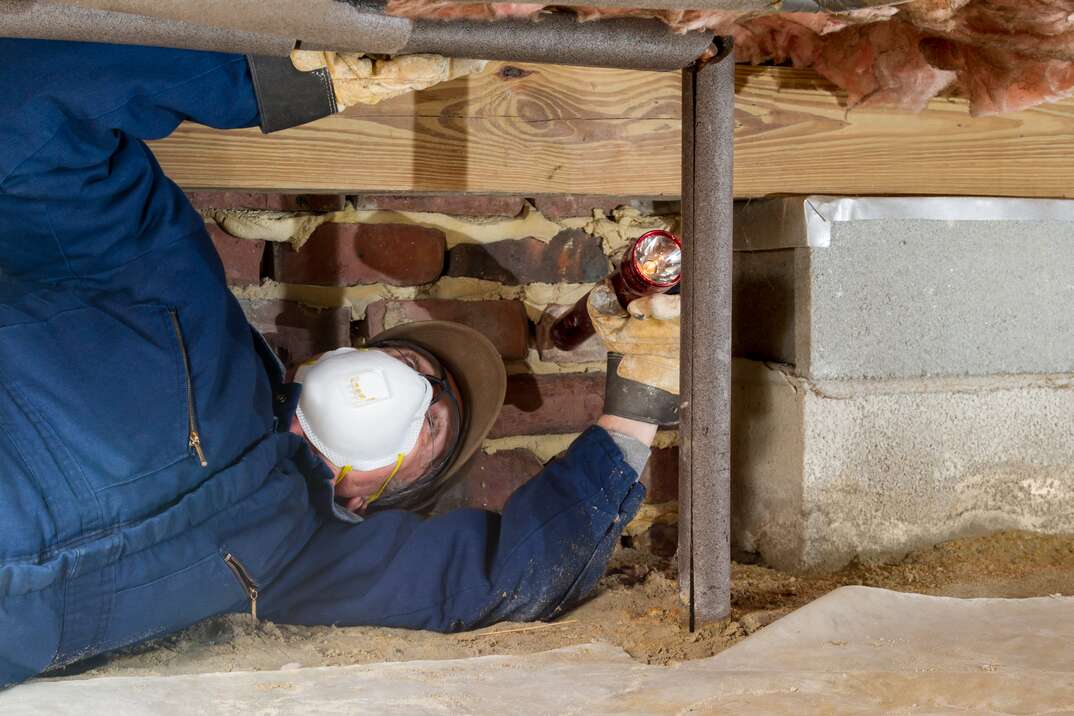What Is Crawlspace Encapsulation and How Much Does It Cost?

Your crawlspace may be out of sight, but it shouldn't be out of mind. A significant proportion of the air in your home gets inside via the crawlspace, so keeping it well-maintained is an effective way to protect your family's health.
Read More Home Improvement Articles
Therefore, crawlspace encapsulation may be worth considering to prevent mold, dampness and other common issues.
What Is Crawlspace Encapsulation and What Does It Do?
Crawlspace encapsulation involves installing a moisture and vapor barrier in the crawlspace below your home. It can prevent moisture problems in your crawlspace, reducing the risk of wood rot, mold and mildew. It can also prevent heat loss via the crawlspace, making your home more comfortable and lowering your energy bills.
Often, pests set up homes in crawlspaces because they're attracted to the dark, damp environment. Encapsulating the crawlspace makes it less welcoming to these unwanted house guests and makes it harder for them to get inside.
Most homeowners install a dehumidifier in an encapsulated crawlspace. A dehumidifier dries out the crawlspace and gets rid of any moisture that manages to creep inside. Specially designed dehumidifiers that can cope with the challenging conditions in your crawlspace are also available. You may also wish to invest in a humidity monitor that can alert you to rising moisture levels without having to enter the crawlspace to inspect it.
You may have heard the term "crawlspace sealing" used to describe crawlspace encapsulation. However, crawlspace sealing is a different and specific process that involves installing a barrier on the crawlspace floor and the lower part of the walls. Sealing is less thorough than encapsulation and offers reduced protection against dampness, mold and pests.
Anyone living in a home built above a crawlspace can benefit from crawlspace encapsulation. However, it's often essential if you live in an area where moisture poses a specific risk. For example, you're more likely to have issues with dampness in your crawlspace if you live near a body of water or your house is lower than the sea level.
Furthermore, a non-encapsulated crawlspace could allow mold spores inside your home and potentially cause significant health issues. Encapsulating your crawlspace should be a top priority if you or someone you live with has a mold allergy, asthma or another respiratory health condition.
Finally, it could be worth encapsulating your crawlspace if your home feels uncomfortably cold or your energy bills are excessively high. Often, encapsulation saves enough energy to pay for itself over time.
More Related Articles:
- How Much Does a Home Inspection Cost?
- 4 Tips for Hiring a General Contractor for Your Next Remodeling Project
- Should You Hire a Contractor or a Handyman?
- 5 Things to Look For When You're Hiring an Electrician
- What to Look for When Hiring an Exterminator
How Much Does Crawlspace Encapsulation Cost?
According to Bob Vila, crawlspace encapsulation costs around $5,500 on average. However, you could spend as little as $1,500 to encapsulate a small crawlspace. Meanwhile, repairing and encapsulating a large crawlspace in poor condition could cost up to $15,000.
You may need to make upgrades to your crawlspace before you can begin encapsulation. For example, your installer may recommend waterproofing your foundation if they detect cracks or leaks. Foundation waterproofing typically costs $4,600. They may also suggest adding insulation to prevent heat loss, which costs roughly 50 cents to $1.50 per foot.
Some homeowners need to install a sump pump or another type of drainage system to remove significant water accumulation in the crawlspace. Expect to spend around $1,300 on sump pump installation.
Most areas require homeowners to obtain a permit to encapsulate a crawlspace. Costs vary by location, but most jurisdictions charge between $100 and $250.
As the cost of encapsulating a crawlspace can be steep, you may wonder if you can do it yourself. Technically, there's no reason why an experienced do-it-yourselfer can't tackle this project. However, crawlspace encapsulation is tiring, dirty work, so it's usually best to leave it to the pros.
Elocal Editorial Content is for educational and entertainment purposes only. Editorial Content should not be used as a substitute for advice from a licensed professional in your state reviewing your issue. Systems, equipment, issues and circumstances vary. Follow the manufacturer's safety precautions. The opinions, beliefs and viewpoints expressed by the eLocal Editorial Team and other third-party content providers do not necessarily reflect the opinions, beliefs and viewpoints of eLocal or its affiliate companies. Use of the Blog is subject to the
Website Terms and Conditions.The eLocal Editorial Team operates independently of eLocal USA's marketing and sales decisions.



